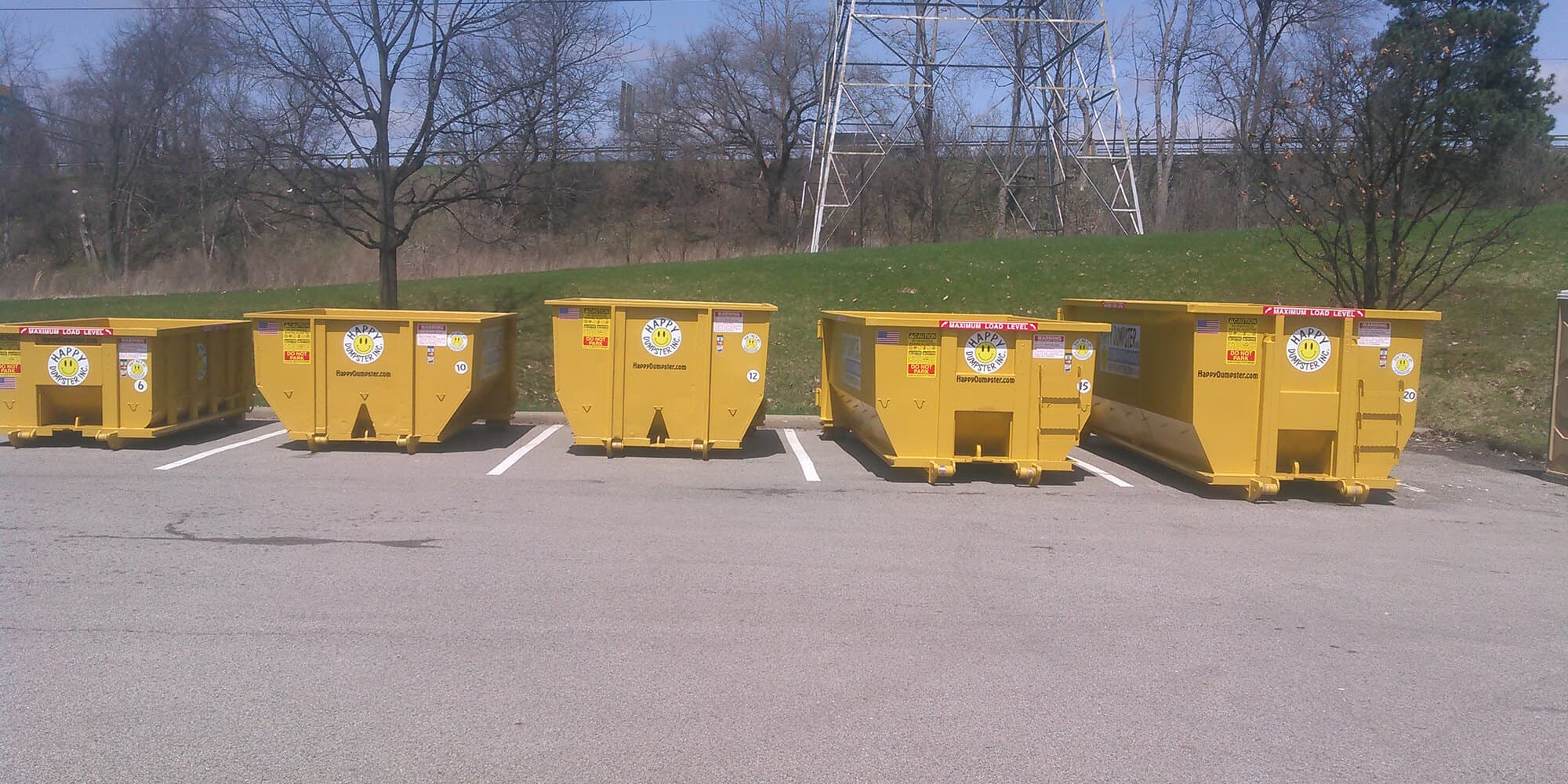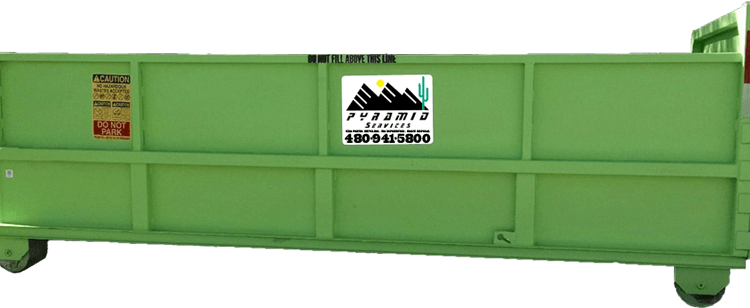Renting a dumpster entails a 10-step procedure to guarantee a problem-free experience. First, establish your dumpster needs by reviewing waste type, amount, and rental duration. Next, choose the right dumpster size, considering factors like cumbersome products and job range. Then, select a reputable rental company, inspecting reviews, licenses, and insurance coverage. Later on, familiarize yourself with local regulations, permits, and garbage disposal needs. Establish a budget and compare costs, including added fees. Set up a distribution day, preparing the site and guaranteeing timely drop-off. Finally, prepare the site, getting rid of the location and getting rid of barriers. By adhering to these actions, you'll be well on your means to an effective dumpster rental experience, and checking out the information of each step will assist you browse the procedure with confidence.
Determine Your Dumpster Needs
Several variables have to be taken into consideration when identifying your dumpster needs The type and quantity of waste you prepare to throw away, the period of the rental period, and the available space at your area are all crucial considerations.
Moreover, local laws and permits required for dumpster positioning should be taken right into account.
Understanding the function of the dumpster rental is additionally essential. Are you carrying out a home renovation, cleaning a basement, or managing a construction website? Various projects create differing sorts of waste, and the appropriate dumpster dimension and type have to be picked accordingly.
Additionally, the weight and product of the waste will affect the option of the dumpster. Heavy materials like concrete or asphalt call for customized dumpsters, while lighter products like yard waste or family trash bin be accommodated by typical dumpsters.
Choose the Right Dumpster Size
To figure out the ideal dimension, take into consideration the scope of your job, the sort of products being disposed of, and the offered area on your property.
Common dumpster sizes array from 10 to 40 cubic lawns. For small projects, such as shower room remodels or backyard cleanups, a 10-20 cubic yard dumpster might suffice. Larger projects, like building or demolition, might require a 30-40 cubic backyard dumpster.
When approximating the size, keep in mind to represent any type of bulky or hefty items, such as devices or concrete, which might take up even more space than expected.

Accurately computing your dumpster demands will certainly assure a hassle-free rental experience and optimize your waste administration budget.
Select a Trusted Rental Company
Regularly, house owners and professionals locate themselves overwhelmed by the large variety of dumpster rental companies trying their company, making it vital to separate the reliable from the unreliable
Researching and choosing a reputable rental company is essential to assure a smooth and convenient dumpster rental experience.

Start by requesting referrals from friends, family, or coworkers who have actually leased dumpsters in the past. You can additionally check online evaluation platforms, such as Yelp or Google Reviews, to get an idea of the company's reputation and client satisfaction.
Look for firms with a solid performance history of giving excellent consumer service, prompt shipments, and competitive pricing.
Additionally, validate if the business is properly licensed and insured to operate in your area. A reputable company will be transparent concerning their solutions, pricing, and policies.
Be wary of firms with vague or hidden fees, as they may shock you with surcharges later on.
Check Regional Dumpster Regulations
Before ordering a dumpster, it is vital to familiarize yourself with the local regulations controling dumpster rental and placement in your area. Failing to comply with these laws can lead to fines, charges, or perhaps revocation of your rental agreement.
Start by contacting your city government or public jobs department to inquire about particular guidelines and restrictions. Some usual guidelines consist of acquiring licenses, adhering to noise ordinances, and abiding by weight and size limitations.
Additionally, you might require to confirm that the dumpster is placed on personal property or acquire authorization from nearby building owners.
It's also important to understand any kind of certain demands for waste disposal, such as dividing recyclables or hazardous materials
Set a Spending plan and Compare Prices
Establishing a spending plan and comparing prices is a vital step in the dumpster rental process, as it allows you to make an informed decision that satisfies https://privatebin.net/?d3a6ef147f49f2bf#7fnnxwmhhw6xEa1NysPJZ4LXkAHFbhgsbuAsrCoPuMoM your requirements and monetary constraints.
By setting a budget, you can narrow down your alternatives and concentrate on dumpster rental services that fit within your ways. Begin by figuring out just how much you agree to invest in dumpster rental, consisting of any kind of additional fees for delivery, pick-up, and disposal.
Next, study local dumpster rental companies and compare their costs. Make certain to take into consideration the size and type of dumpster you require, as well as any kind of extra services you might call for, such as same-day delivery or flexible rental periods.
Create a list of prospective carriers, including their costs and services, to help you make a knowledgeable choice. By comparing prices and services, you can determine you're getting the best worth for your money and stay clear of overspending on your dumpster rental.
Schedule Dumpster Shipment Date
With your budget plan in place and a list of possible dumpster rental providers in hand, it's time to transform your focus to scheduling the distribution of your dumpster.
This vital action assurances that your task remains on track which you have the needed devices to get the job done.
When organizing your dumpster distribution day, think about the following:
Project timeline: Straighten the distribution date with your job's beginning day to ensure you have the dumpster on website when you require it.

Availability: Confirm the rental provider's schedule and routine the shipment at once that functions best for you.
Access restrictions: Inform the supplier of any type of gain access to constraints, such as slim streets or gated neighborhoods, to ensure a smooth distribution process.
Alternative dates: Have a backup strategy in position in instance of unanticipated hold-ups or changes in your job schedule.
Prepare the Dumpster Delivery Site
Clear the location around the designated shipment site to guarantee a seamless and efficient dumpster drop-off. Ascertain the course is free from obstacles, consisting of automobiles, trees, and high-voltage line, to enable the dumpster vehicle to access the site easily.
Consider the dumpster's size and swing radius when selecting a delivery place. Generally, a 10- to 20-foot distance is needed for a common dumpster.
Remove any loose debris, such as leaves or branches, to prevent damages to the dumpster or surrounding building. If you're renting a dumpster for a construction job, determine the website is clear of developing products, devices, and equipment.
If you're leasing for a residential cleanout, eliminate any mess or obstructions that may prevent the distribution process.
Designate a particular location for the dumpster, such as a driveway or a flat, level surface This will certainly aid avoid the dumpster from shifting throughout use and establish it can be easily picked up when the rental duration ends.